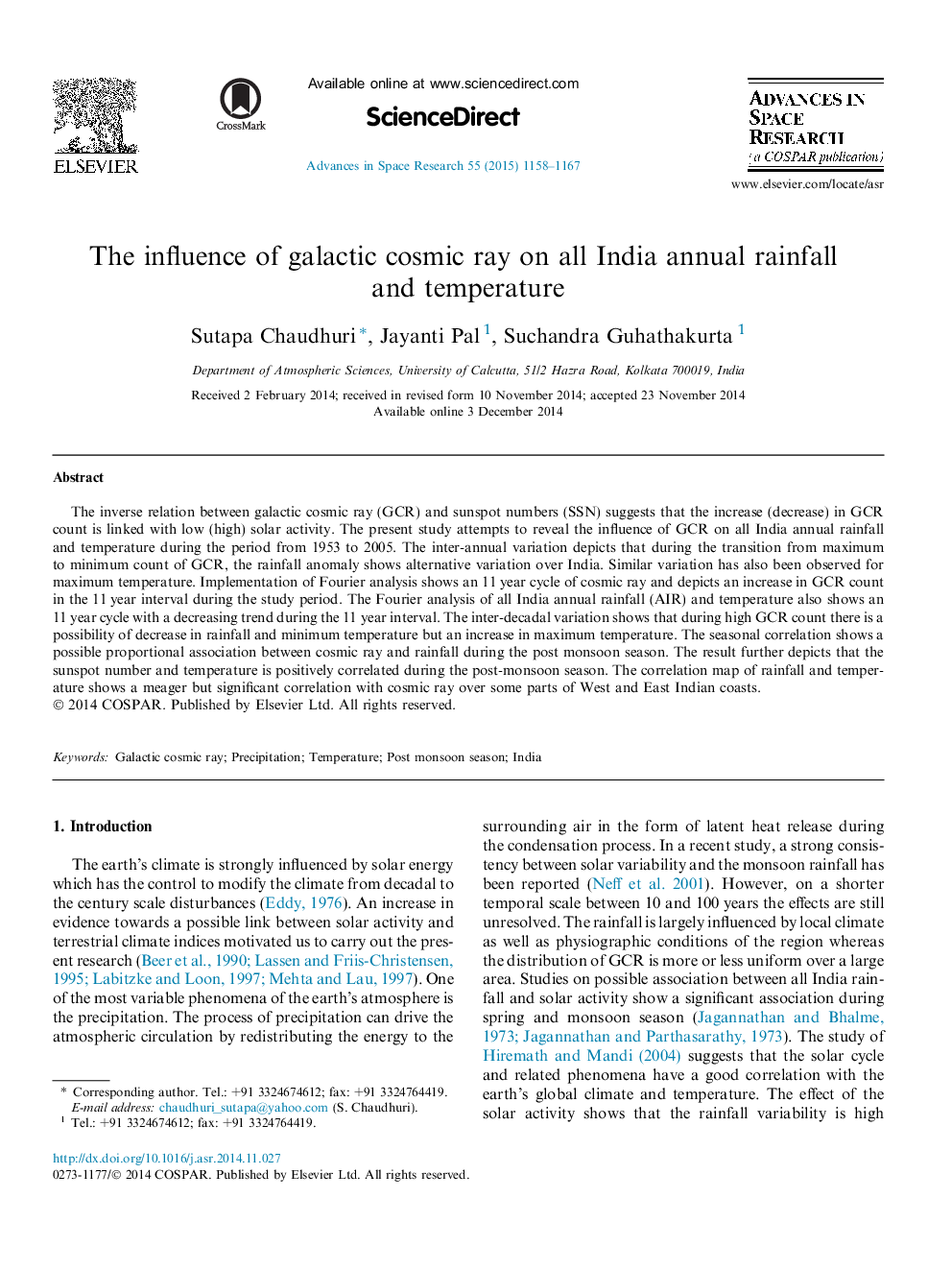| Article ID | Journal | Published Year | Pages | File Type |
|---|---|---|---|---|
| 10694240 | Advances in Space Research | 2015 | 10 Pages |
Abstract
The inverse relation between galactic cosmic ray (GCR) and sunspot numbers (SSN) suggests that the increase (decrease) in GCR count is linked with low (high) solar activity. The present study attempts to reveal the influence of GCR on all India annual rainfall and temperature during the period from 1953 to 2005. The inter-annual variation depicts that during the transition from maximum to minimum count of GCR, the rainfall anomaly shows alternative variation over India. Similar variation has also been observed for maximum temperature. Implementation of Fourier analysis shows an 11Â year cycle of cosmic ray and depicts an increase in GCR count in the 11Â year interval during the study period. The Fourier analysis of all India annual rainfall (AIR) and temperature also shows an 11Â year cycle with a decreasing trend during the 11Â year interval. The inter-decadal variation shows that during high GCR count there is a possibility of decrease in rainfall and minimum temperature but an increase in maximum temperature. The seasonal correlation shows a possible proportional association between cosmic ray and rainfall during the post monsoon season. The result further depicts that the sunspot number and temperature is positively correlated during the post-monsoon season. The correlation map of rainfall and temperature shows a meager but significant correlation with cosmic ray over some parts of West and East Indian coasts.
Related Topics
Physical Sciences and Engineering
Earth and Planetary Sciences
Space and Planetary Science
Authors
Sutapa Chaudhuri, Jayanti Pal, Suchandra Guhathakurta,
